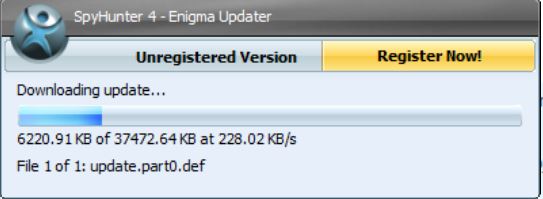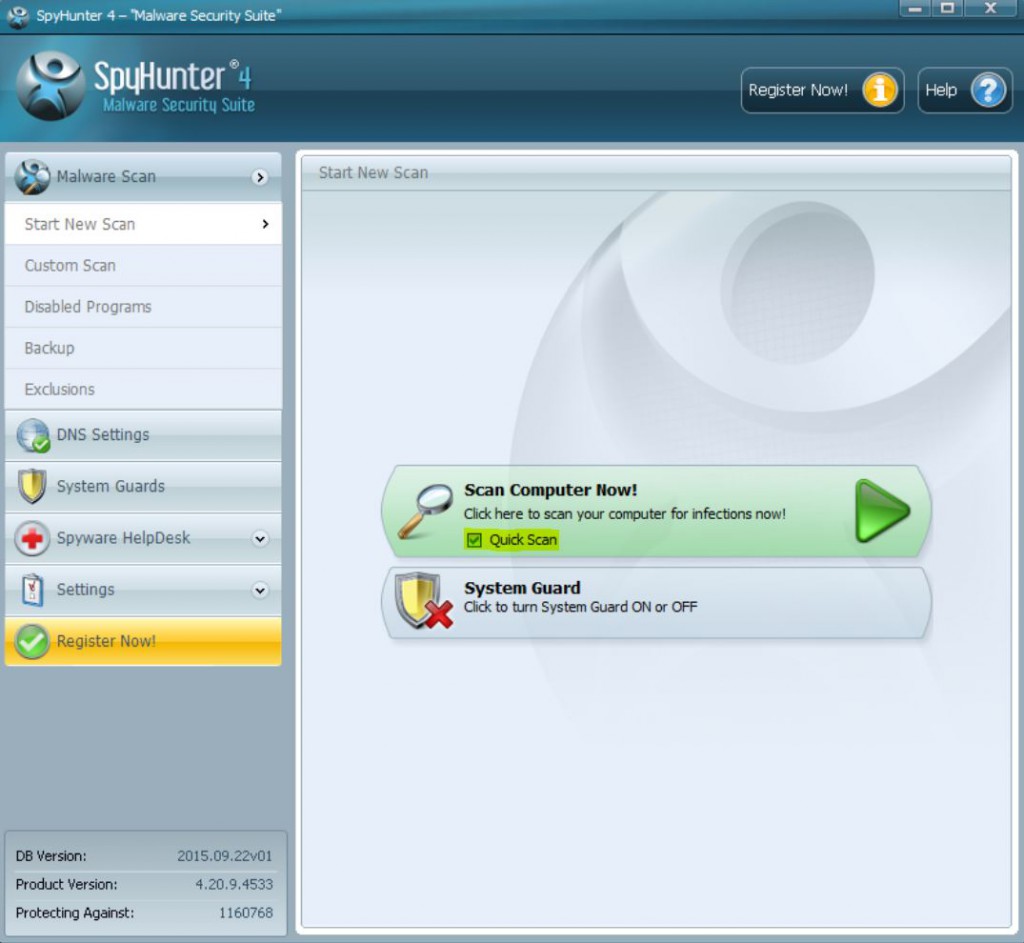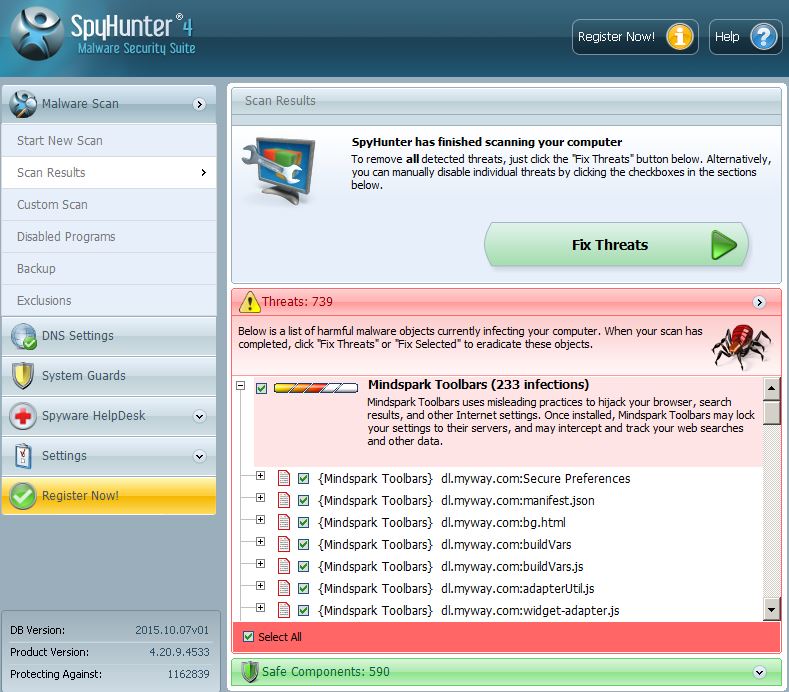Read this blog post to learn how to remove Exolock ransomware and how to restore files that have been encrypted by it.
A new ransomware virus, named Exolock ransomware has been detected by malware researchers. The threat aims to perform multiple malicious activities on your computer, including encrypting your files in order to hold them hostage in return for a ransom payoff to unlock them. In addition to this, the virus makes it so that you follow specific instructions and gives a deadline to pay, otherwise the files may be lost forever. If you have been infected by the Exolock ransomware, make sure tso read this article and learn how to remove it and try to restore your files without having to pay any form of ransom to cyber-criminals.
| Threat Name | Exolock |
| Category | Ransomware virus. |
| Main Activity | Infects the computer after which encrypts important documents and holds them hostage until a ransom is paid. |
| Signs of Presence | Files are encrypted with a custom file extension. |
| Spread | Via malicious e-mail spam and set of infection tools. |
| Detection+Removal | DOWNLOAD REMOVAL TOOL FOR Exolock |
| File Recovery | Download Data Recovery Software, to see how many files encrypted by Exolock ransomware you will be able to recover. |
What Type of Malware Is the Exolock Ransomware
Ransomware in general has been a growing trend with infection and particularly effective. It prays primarily on those users who do not have a backup of their important files. The Exolock Ransomware encrypts your important documents, music, videos, pictures, archives and other data, making them no longer effective. The files cannot be opened after they have been attacked by the Exolock Ransomware and they have a custom extension added after their file name – a random A-Z 0-9 letters.
In fact, the infections with ransomware, just like Exolock have become so massive that you can be sure that at the moment somebody somewhere in the world is either opening a suspicious spammed e-mail attachment, believing it is legit or clicking on a malicious web link.
But the ransomware can also be spread completely automatically, similar to the WannaCry virus which was spread via a worm infection, causing the data of over 200,000 computers to be encrypted. The creators of ransomware who are involved in this act as if they have nothing to lose and do not mess around. They have invested a lot in their attacks and organized them so that as many inexperienced users as possible become victims.
How to Protect Oneself Against Ransomware Viruses?
After the inevitable has happened, you should learn how to prevent it from happening to you in the future. There are several different solutions to ransomware, but they all come down to two main strategy.
Solution number one is to understand what you are dealing with. If the ransomware virus that has infected you, in this case Exolock ransomware, make sure to check our website for any solutions of the threat. Usually most antivirus vendors create decryptors for those ransomware viruses that can be cracked, in other words, which are decryptable. Usually a ransomware virus can be decrypted if there is a mistake in the code written by the hackers who made it or of the encryption algorithm (the language used to make your files non-readable) has a method to be decrypted. Usually, however, most ransom viruses have an immensely strong encryption algorithm and they are non-decryptable. Usually it takes some time do develop a decrypter, but keep following this blog post as we will update with a download link to the tool which can get back your data.
How to Remove Exolock Ransomware and Back Up My Data
The removal process of this virus may prove to be a tricky one. This is primarily because the virus may be involved in several different stages of operation that create mutexes, registry entries and files on your computer. All of the objects created by Exolock Ransomware may be difficult to remove manually and In some situations may even cause harm to your computer. The safest way to remove malicious files, according to experts is to use an advanced tool that hunts specifically for these type of ransomware infections and removes them. Such tool will not get your files back but will scan your computer automatically and delete the virus as fast as possible so that your PC is safe. And after the removal, you can try using some other third-party methods to restore files that have been encrypted by Exolock Ransomware while you wait for antivirus vendors to develop a decrypter.
Booting in Safe Mode
For Windows:
1) Hold Windows Key and R
2) A run Window will appear, in it type “msconfig” and hit Enter
3) After the Window appears go to the Boot tab and select Safe Boot
Cut out Exolock in Task Manager
1) Press CTRL+ESC+SHIFT at the same time.
2) Locate the “Processes” tab.
3) Locate the malicious process of Exolock, and end it’s task by right-clicking on it and clicking on “End Process”
Eliminate Exolock‘s Malicious Registries
For most Windows variants:
1) Hold Windows Button and R.
2) In the “Run” box type “Regedit” and hit “Enter”.
3) Hold CTRL+F keys and type Exolock or the file name of the malicious executable of the virus which is usually located in %AppData%, %Temp%, %Local%, %Roaming% or %SystemDrive%.
4) After having located malicious registry objects, some of which are usually in the Run and RunOnce subkeys delete them ermanently and restart your computer. Here is how to find and delete keys for different versions.
For Windows 7: Open the Start Menu and in the search type and type regedit –> Open it. –> Hold CTRL + F buttons –> Type Exolock Virus in the search field.
Win 8/10 users: Start Button –> Choose Run –> type regedit –> Hit Enter -> Press CTRL + F buttons. Type Exolock in the search field.
Automatic Removal of Exolock
Step 1:Click on the button to download SpyHunter’s installer.
It is advisable to run a scan before committing to purchase the full version. You should make sure that the malware is detected by SpyHunter first.
Step 2: Guide yourself by the download instructions provided for each browser.
Step 3: After you have installed SpyHunter, wait for the program to update.
Step4: After this click on the “Scan Computer Now” button.
Step5: After SpyHunter has completed with your system`s scan, click on the “Fix Threats” button to clear it.
Step6: Once your computer is clean, it is advisable to restart it.
Recover files encrypted by the Exolock Ransomware.
Method 1: Using Shadow Explorer. In case you have enabled File history on your Windows Machine one thing you can do is to use Shadow Explorer to get your files back. Unfortunately some ransomware viruses may delete those shadow volume copies with an administrative command to prevent you from doing just that.
Method 2: If you try to decrypt your files using third-party decryption tools. There are many antivirus providers who have decrypted multiple ransomware viruses the last couple of years and posted decryptors for them. Chances are if your ransomware virus uses the same encryption code used by a decryptable virus, you may get the files back. However, this is also not a guarantee, so you might want to try this method with copies of the original encrypted files, because if a third-party program tampers with their encrypted structure, they may be damaged permanently. Here are the vendors to look for:
- Kaspersky.
- Emsisoft.
- TrendMicro.
Method 3: Using Data Recovery tools. This method is suggested by multiple experts in the field. It can be used to scan your hard drive’s sectors and hence scramble the encrypted files anew as if they were deleted. Most ransomware viruses usually delete a file and create an encrypted copy to prevent such programs for restoring the files, but not all are this sophisticated. So you may have a chance of restoring some of your files with this method. Here are several data recovery programs which you can try and restore at least some of your files:



